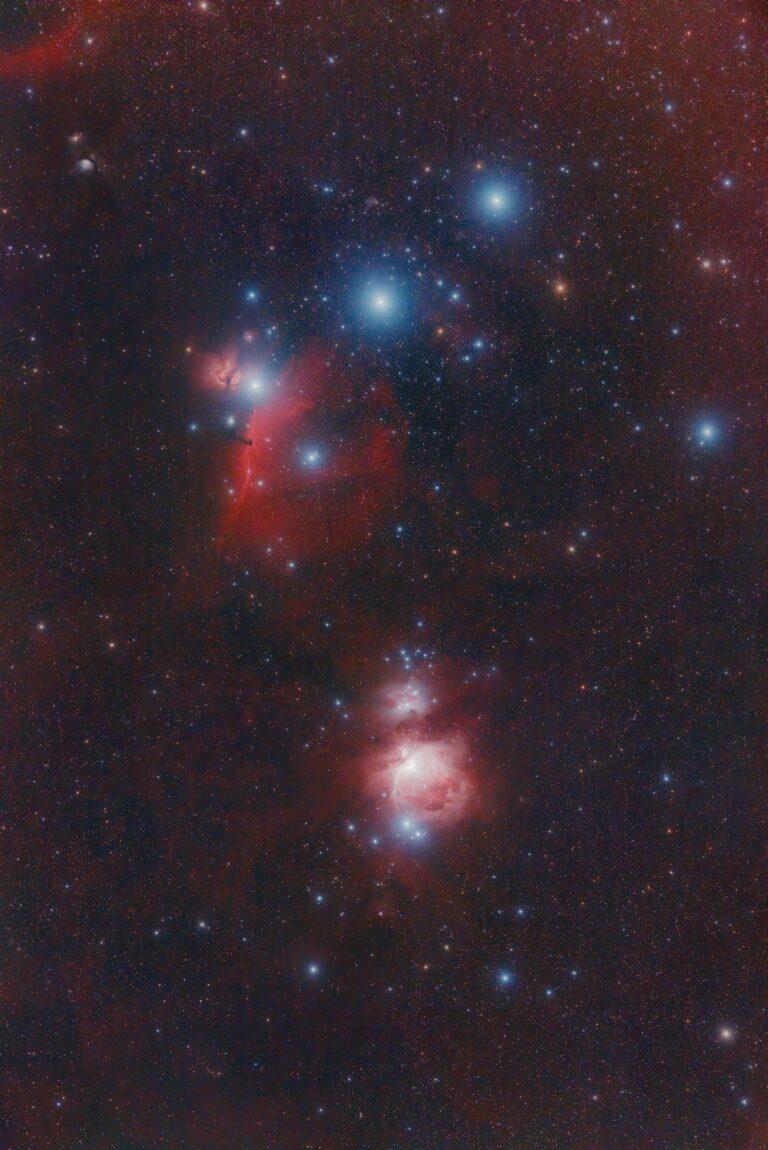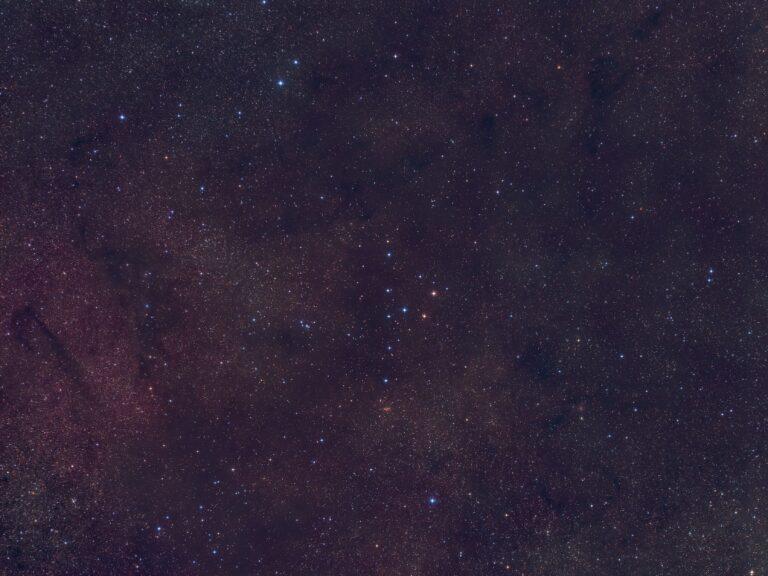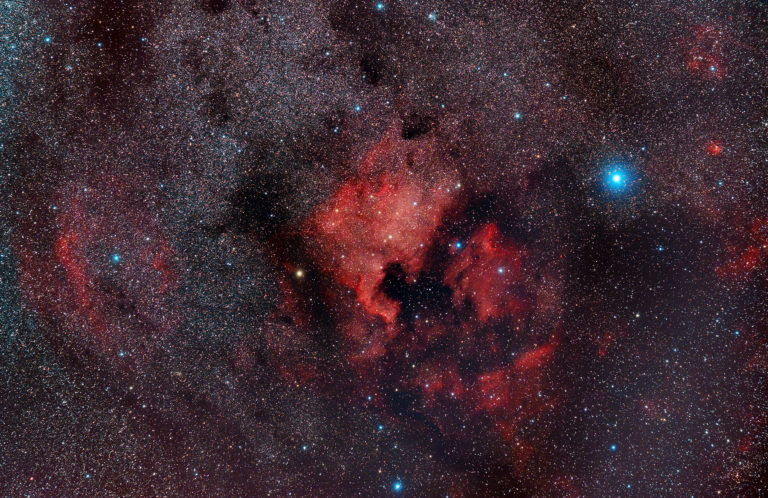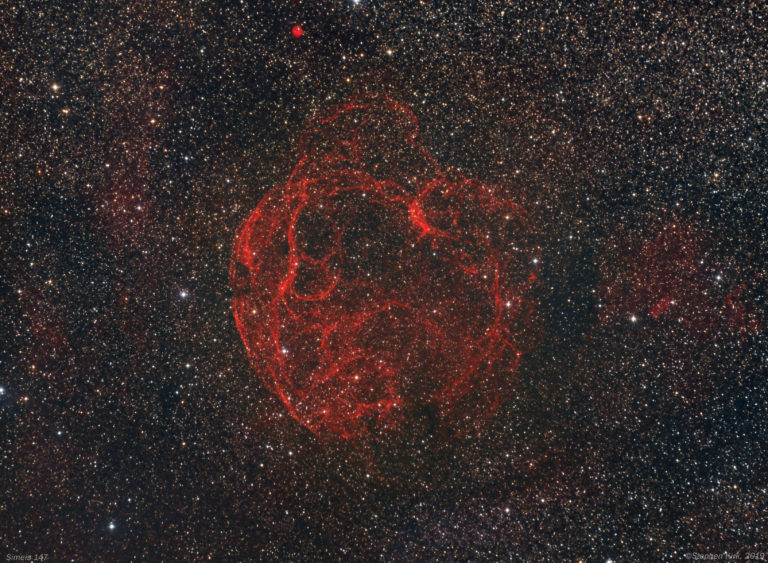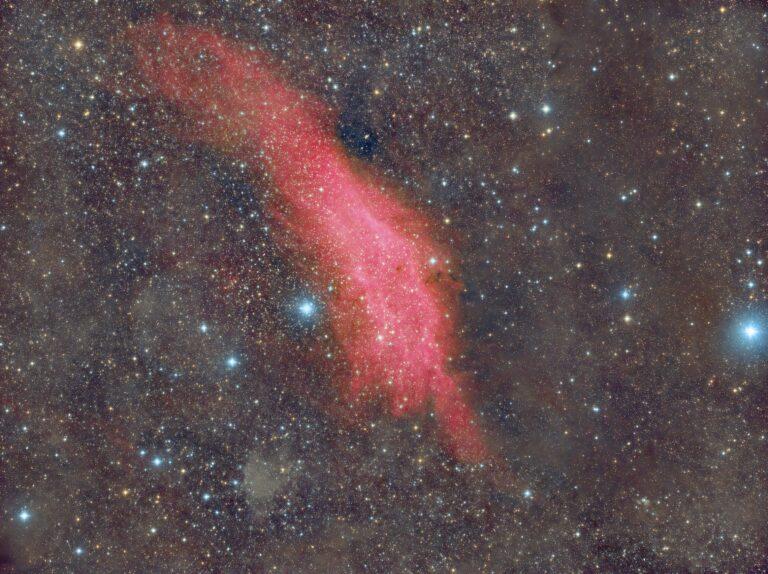An image of Orion from January 2023 taken with a QHY268C cooled astronomy camera mated with a Samyang 135mm lens to give a very wide field view. Orion In A Wide Field with QHY268C and a Samyang 135mm DLSR lens Full sized image here (opens in a new tab).The image is composed of 56 x 120s exposures at F2.8. I used my wide field rig with autofocus to get the stars and nebulosity sharp and tight. I captured flats, darks and dark-flats. Mounted on NEQ6 with a guider scope and image data captured with NINA. All pre and post development is done in PixInsight.Captured over two nights 20th and 23rd January 2023 when Orion was high to the south. From my back yard in Saxondale, Nottinghamshire – suburban, Bortle 4-5.I have also captured the Constellation of Orion here. Annotated Version Finder Chart
Collinder 399 or Brocchi’s Cluster is offered nicknamed “The Coathanger” for its striking resemblance to that wardrobe item! If you look at the stars in the middle of the image and it looks very much like a coathanger on its side. It is located within the constellation of Vulpecula – The Fox – within a larger asterism called The Summer Triangle. The Coathanger is a chance, line-of-sight effect and the stars that form the appearance of the coathanger are not physically associated with each other at all and range from 350 to 2300 light years in distance. The stars are backdropped against the vast clouds of glowing hydrogen that dominate the spiral arms of the Milky Way galaxy. The Coathanger in Vulpecula Image Technical Data Uncompressed version of the image is here (opens in new tab).Image captured in my backyard in Nottingham, UK on Sunday 20th September 2020. I used…
North American and Pelican Nebulae with Samyang 135mm lens and QHY268C Camera This is my first ever image capture with the excellent NINA software. I used my wide-field rig which consists of the Samyang 135mm lens and QHY268C OSC camera using an IDAS 2″ LP filter. The wide angle view brings out the North American nebula (NGC 7000) and The Pelican nebula to its right very nicely. There is also a lot of other background luminosity in the image.The image set is a modest 18 x 180s exposures captured in August 2021, all the data being binned 1×1. Pre-processed and processed in PixInsight with a few tweaks in Photoshop.
Simeis 147 (Sharpless Sh2-240) sometimes called The Spaghetti Nebula is a supernova remnant of a star that exploded forty thousand years ago. It sits across the border of Taurus and Auriga and is a huge object, about six moon widths across. It is located about 3000 light years away. Because of its extremely low surface brightness it was only discovered as recently as 1952. It is an exceptionally difficult object to observe visually and to have any hope of seeing it with your own eyes at the eyepiece requires extremely dark skies (Bortle 1), specialist filters, immaculate seeing and transparency and extreme dark adaption of your eyes. This rules out almost anywhere near civilisation. Personally speaking, I have never known any astronomer who has seen it visually. Even with photography it requires very long exposure times to bring out any detail. Simeis 147 Image Technical Data This image was created…
The California Nebula – NGC 1499 – is a vast hydrogen gas emission nebula about 1000 light years away in the constellation of Perseus. It is named as such because of its vague resemblance to the US state of California.It is a very large, faint and diffuse object, about four times the diameter of the moon. It is almost completely invisible visually without specialist filters and was not discovered until the advent of astrophotography in 1884. The nebula shines by reflecting the light of the bright star Markib. It shines red because Hydrogen atoms, when excited by nearby bright sources like stars, emit or re-radiate light at the 656nm wavelength which is in the red part of the spectrum to our eyes. The California Nebula Image Technical Data The California Nebula is so large that most telescopes cannot get the nebula in the field of view, nowhere near in fact. …

